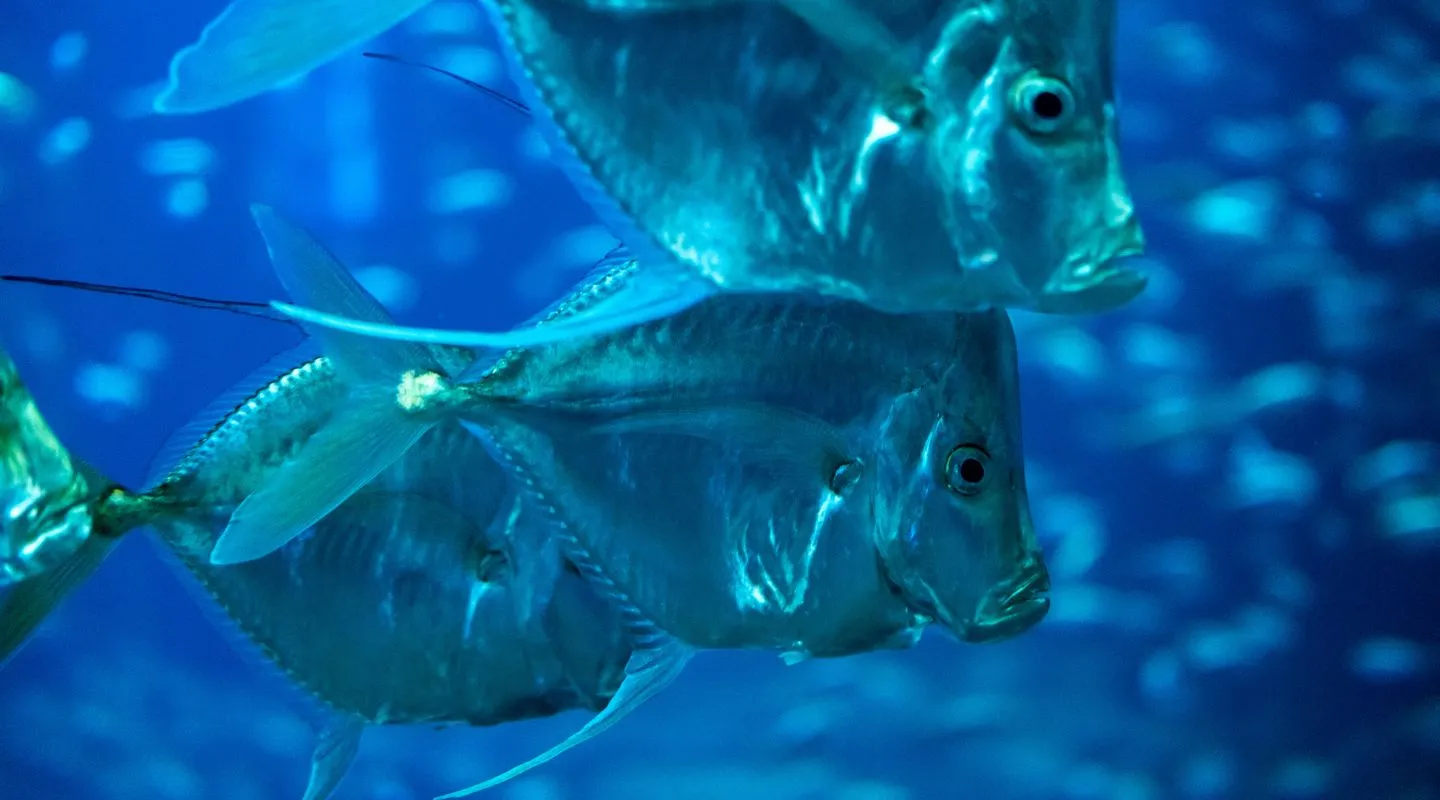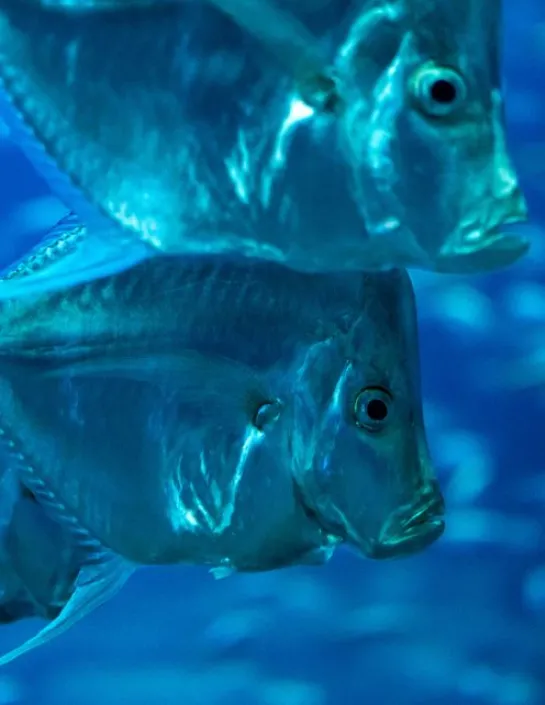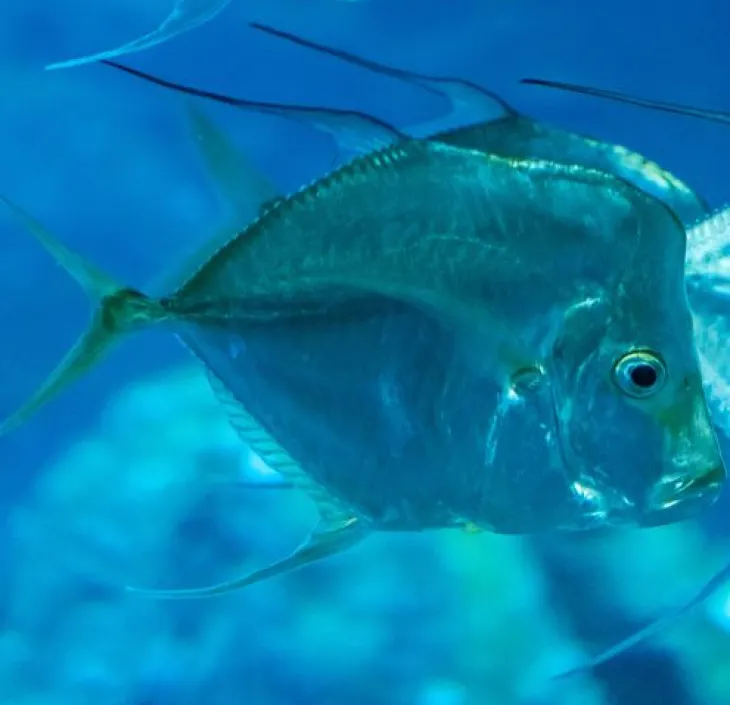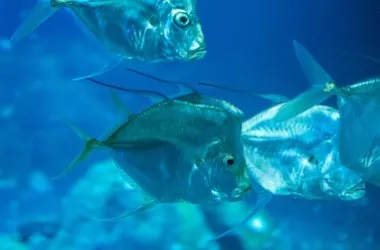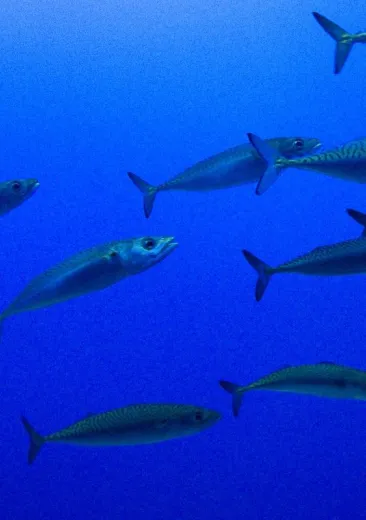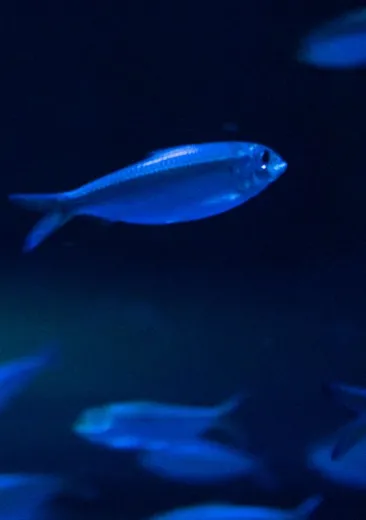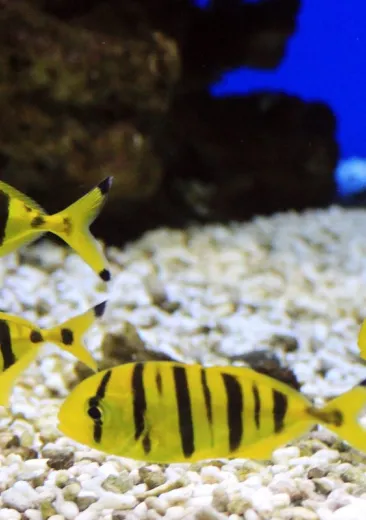At Nausicaá, the Atlantic lookdowns live in a 10,000-m3 tank. They encounter the oceanic manta ray, grey sharks, eagle rays and devilfish, as well as other schooling fish such as Pacific Chub mackerel and snappers.
Where is the animal to be found?
It is found at a depth of between 1 and 53 metres. It lives in groups in shallow coastal waters above sandy or rocky sea beds as an adult; juveniles live in estuary areas.
West Atlantic, in the Gulf of Mexico, in the Caribbean and along the coast of Central and South America from Mexico to Argentina.
How can it be recognised?
The particularity of this fish is that its body is tightly compressed sideways, its head is vertical and its mouth points downwards, which explains its English name "Lookdown".
It is silver coloured. The size of the Atlantic lookdown is typically 24 cm with a maximum size of 40 cm.
What is distinctive about it?
- This silver colour is an extraordinary advantage for the Atlantic lookdown. In effect, out in the open ocean, there is nowhere to hide. However, to avoid being seen by predators, the Atlantic lookdown has an ingenious camouflage method that is of interest to researchers. This camouflage surpasses the "mirror strategy", a camouflage method used by fish that consists of reflecting sunlight onto their skin using its reflective properties.
- In the case of the Atlantic lockdown, it manipulates the polarised light that many species of fish can perceive (humans cannot) to be able to match the angle of the sunlight. In this way, it can remain hidden at any time of the day, regardless of the position of the sun.
Menace et mesure de protection
Its flesh is highly prized, but eating it comes with a risk of contracting ciguatera, a dietary disease caused by a toxin found in certain microscopic algae eaten by fish. This risk also exists when eating shark meat.
